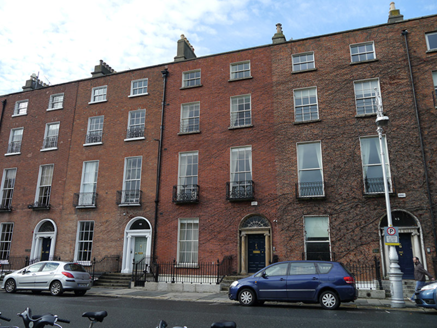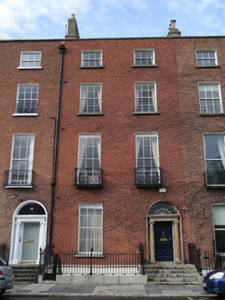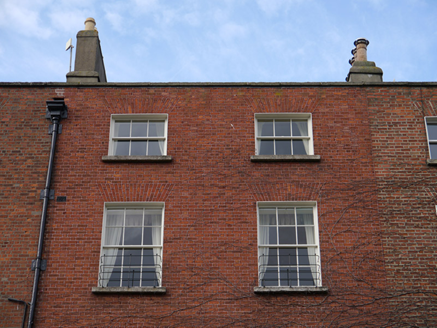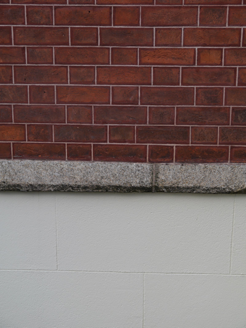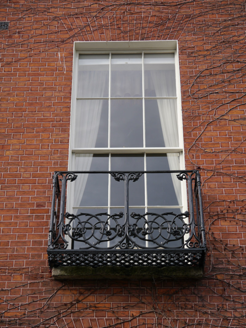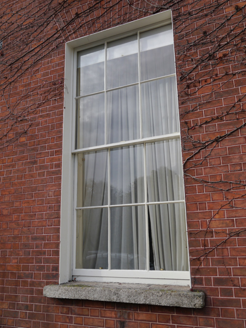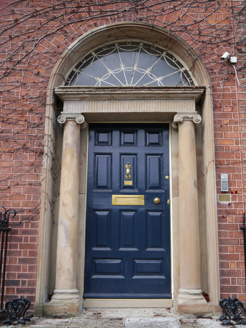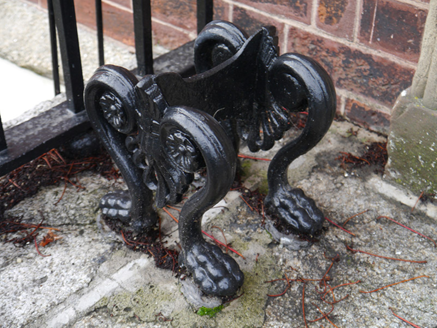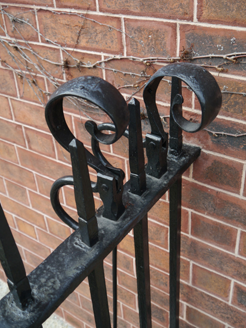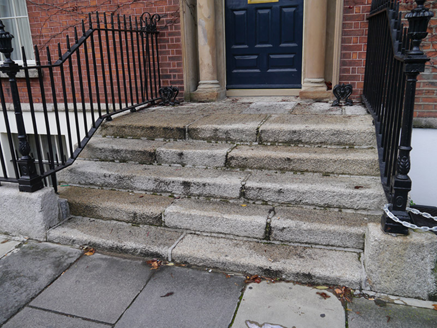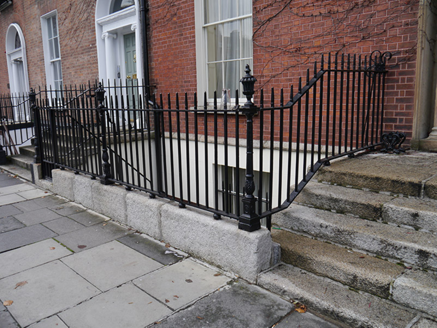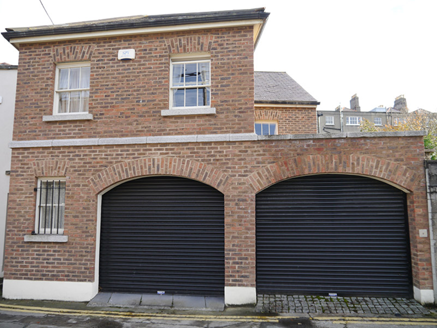Survey Data
Reg No
50930271
Rating
Regional
Categories of Special Interest
Architectural, Artistic
Original Use
House
In Use As
House
Date
1805 - 1815
Coordinates
316406, 233128
Date Recorded
11/11/2015
Date Updated
--/--/--
Description
Terraced two-bay four-storey over basement townhouse, built c. 1810, with two-storey return to rear (west). Now in use as house and apartment. Pitched roof to east with irregular M-profile hipped roof to rear (west), concealed by brick parapet with granite coping. Shouldered rendered chimneystacks to party walls with lipped yellow clay pots. Parapet gutters with replacement cast-iron downpipe and hopper to south end. Red brick walling laid in Flemish bond with wigged pointing, over ruled-and-lined rendered walling to basement beneath granite plinth course. Square-headed window openings with brick voussoirs, rendered reveals and masonry sills. Largely six-over-six timber sliding sash windows, three-over-three to third floor and eight-over-eight to basement. Wrought-iron guard rails to second floor window openings and decorative cast-iron balconettes to first floor. Round-headed door opening with brick voussoirs, moulded reveals and sandstone doorcase comprising; fluted frieze and moulded cornice carried on Ionic columns over plinth stops, decorative fanlight and raised-and-field timber panelled door with brass furniture. Granite entrance platform with cast-iron boot scrapers, approached by five granite steps flanked by iron railings with decorative cast-iron corner posts over granite plinth, enclosing basement to south-side. Iron bell pulls set in railings. Coal-hole cover to pavement. Street fronted on Fitzwilliam Square West. Replacement two-storey mews building to west on Laverty Court with a pair of segmental-headed carriage-arches.
Appraisal
A Georgian townhouse forming part of a relatively intact imposing early-nineteenth century streetscape. Built by John Smith Fleming, one of the original commissioners of the square. (Bryan, 2006). The survival of the bell pulls is particularly rare. Almost all of the western side of the square was completed between c. 1807-15. Laid out in 1791 by the surveyors J & P Roe, Fitzwilliam Square was the last of the city’s Georgian squares to be completed. Development was staggered, progressing slowly due to the French wars. Although largely homogenous in character and form, the subtle variations between terraces are indicative of the speculative nature of the square’s development.
